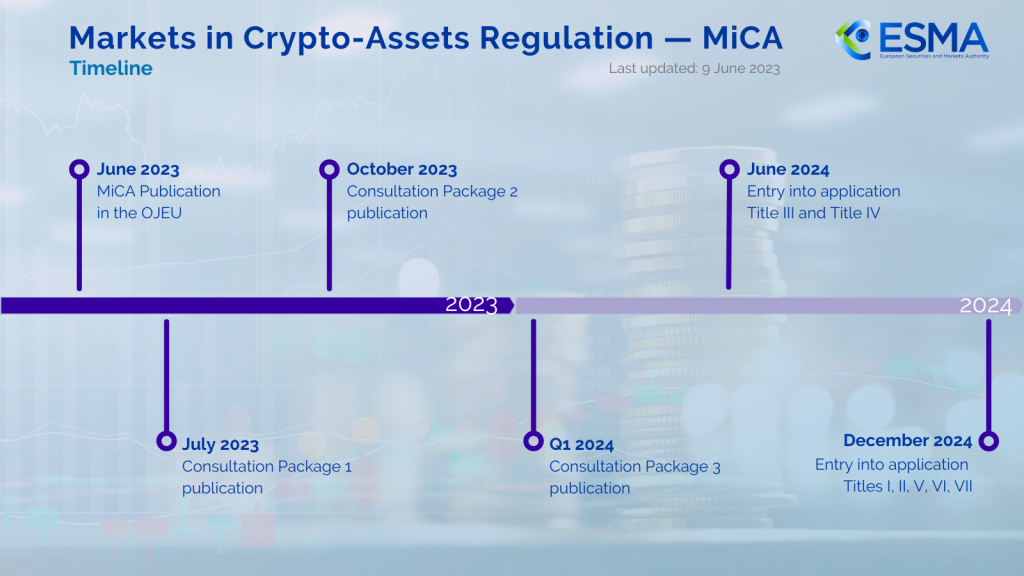
On June 27, 2024, the U.S. Supreme Court issued its decision in Securities & Exchange Commission v. Jarkesy, addressing the circumstances in which a party subject to an administrative enforcement action is entitled, under Article III of the Constitution, to have that action determined by a jury.[1] In reaching its decision, the majority applied a two-step framework to outline whether an administrative agency can lawfully subject a party to an enforcement action using internal adjudication processes or whether the Seventh Amendment entitles a party subject to the enforcement action to a jury trial.[2]
Although the majority opinion focused on the Securities and Exchange Commission’s authority to impose civil penalties for a securities fraud claim via its internal administrative apparatus,[3] the breadth of some of the Court’s reasoning naturally calls into question the enforcement powers of other administrative agencies.[4]
This article will consider this issue with specific focus on the National Labor Relations Board (“NLRB”). By outlining NLRB enforcement options and applying them to the Jarkesy reasoning, the authors hope to provide practitioners and courts with some useful thoughts to help as these cases inevitably arise.
NLRB Enforcement Authority
Jarkesy is most relevant to administrative agencies with internal adjudicative processes, rather than those that must resort to the courts to enforce policy. Even within the field of labor and employment law, though, different agencies have different enforcement powers.
For example, the Equal Employment Opportunity Commission (“EEOC”) is empowered “to prevent any person from engaging in any unlawful employment practice,”[5] but its internal processes include only investigations and informal resolution methods.[6] The EEOC must bring an action in U.S. district court to otherwise enforce its prerogatives,[7] including when it seeks compensatory or punitive damages for intentional unlawful acts.[8]
Section 10 of the National Labor Relations Act (“Act”) grants the NLRB powers “to prevent any person from engaging in any unfair labor practice.”[9] But in contrast to the EEOC approach, the NLRB can adjudicate violations of labor law. Specifically, the Act authorizes the NLRB to issue and serve complaints alleging unfair labor practices,[10] to conduct fact-finding hearings, to issue orders requiring violators to cease and desist from such practices, and “to take such affirmative action including reinstatement of employees with or without back pay, as will effectuate the policies of [the Act].”[11] Federal courts are not involved in an NLRB adjudication unless the subject of the enforcement action appeals the NLRB’s decision,[12] or unless the NLRB seeks court assistance in the enforcement of its order.[13]
The NLRB’s authority under section 10(c) to craft appropriate remedies is “a broad discretionary one, subject to limited judicial review.”[14] Even under judicial review, NLRB orders stand “unless it can be shown that the order is a patent attempt to achieve ends other than those which can fairly be said to effectuate the policies of the Act.”[15] Furthermore, the NLRB’s findings of fact are conclusive unless the reviewing court is convinced that additional evidence should be considered.[16] However, the court does not take evidence; instead, the NLRB reopens its fact-finding process and may modify its findings or make new findings.[17]
The principal objective for the NLRB in fashioning remedies is to make the victim of an unfair labor practice whole, as though the violation had never occurred.[18] The remedies expressly authorized by the Act—orders for reinstatement of employees and to cease and desist unfair labor practices—further this purpose.[19] Likewise, an order for back pay is also largely remedial.[20] But the NLRB has construed this make-whole objective broadly, at times ordering monetary relief for harms directly and indirectly stemming from an unfair labor practice.[21]
Jarkesy Framework, Part 1: The Nature of the Remedy
The Seventh Amendment to the U.S. Constitution provides that “[i]n suits at common law, where the value in controversy shall exceed twenty dollars, the right of trial by jury shall be preserved. . . .”[22] As explained in Jarkesy, the initial question is whether an internal administrative adjudication falls within the Seventh Amendment as a “suit at common law.” According to the Court, despite the amendment’s phrasing, the right to a jury is not strictly limited to claims arising under common law: a statutory claim is subject to the amendment if the claim is “legal in nature”—that is, not arising under equity, admiralty, or maritime jurisprudence.[23]
According to the Court, in making such an assessment, the nature of the remedy is the most important consideration. Monetary damages, especially when imposed to punish or deter wrongful conduct, are within the scope of legal remedies. In contrast, remedies designed to restore the status quo are more likely to be considered equitable in nature.[24]
As discussed above, the relief typically imposed by the NLRB is equitable in nature, with remediation of harm the primary objective. In the 1937 case of National Labor Relations Board v. Jones & Laughlin Steel Corp., the Court held that NLRB awards of money damages incident to equitable relief (such as back pay) are not subject to the Seventh Amendment.[25] But awards of back pay serve not merely a remedial purpose—they also act as a deterrent against wrongful conduct.[26] Jarkesy’s emphasis on the purpose of the remedy calls into question whether Jones & Laughlin Steel should be revisited to determine whether the dual purposes of such relief render back pay damages subject to the Seventh Amendment.[27]
Jarkesy Framework, Part 2: The Public Rights Exception
Even if the NLRB’s monetary awards are legal in nature, the agency may nevertheless be able to claim an exception to the Seventh Amendment’s jury requirement. As the Jarkesy majority recognized, under the so-called public rights exception, if a cause of action has historically been determined by the executive or legislative branches, the judicial branch does not have exclusive jurisdiction over the claim.[28] This exception typically extends to various types of administrative actions including revenue collection, immigration, relations with Indian tribes, administration of public lands, and the granting of public benefits.[29]
In looking at the claim in Jarkesy—fraud—the majority considered whether the cause of action was substantially the same as one that might have arisen under traditional English common-law customs circa the late eighteenth century. The Court had little difficulty determining that the exception did not apply, as fraud was well-known in traditional common-law courts.[30]
However, the majority distinguished the fraud claim at issue from an earlier decision, Atlas Roofing Co. v. Occupational Safety & Health Review Commission,[31] involving workplace safety regulations. Since the regulations at issue in Atlas Roofing were not founded in common law, the Jarkesy majority found the case inapplicable to its consideration.[32]
Therefore, determining whether unfair labor practice claims are within the public rights exception requires a review of the history of labor rights and whether the unfair labor practices policed by the NLRB have historical common-law analogs or are creations of modern legislative and executive functions.
There is at least one example of an English court in the 1700s relying on common-law criminal conspiracy principles to restrict the collective rights of organized workers.[33] However, scholars debate whether the decision was truly based on common-law doctrines or a statute passed the preceding year.[34] The leading early American case considering the question expressly rejected the English precedent as a common-law rule because of the existence of statutory prohibition.[35] Essentially, in the absence of a statute making the collective action unlawful, a conspiracy to engage in the action cannot be considered criminal under the common law.
Thus, there is a historical American legal tradition of looking to statute to define lawful and unlawful collective bargaining rights and duties. The Act does just that, assigning the adjudication of such rights and duties to the NLRB as permitted by the public rights exception.[36] But the Jarkesy majority cautioned that the public rights exception is an exception,[37] with Article III courts presumptively the appropriate forum even where an argument can be made in support of the exception’s application.[38]
Thus, while we believe the stronger argument is that the public rights exception applies to NLRB actions, there is insufficient certainty in existing case law to make a definitive determination. The Court in Jarkesy cautioned that its jurisprudence on the public rights exception is an “area of frequently arcane distinctions and confusing precedents,” with no definitive distinction between public and private rights.[39] While Jones & Laughlin Steel is precedent holding that NLRB-imposed remedies are not subject to the Seventh Amendment,[40] the Court has shown its willingness to cast aside long-standing precedent to rein in administrative authority.[41]
Sec. & Exch. Comm’n v. Jarkesy, 144 S. Ct. 2117 (2024). ↑
Id. ↑
Id. at 2126–31. ↑
See Kai Ryssdal & Sofia Terenzio, What the Supreme Court’s SEC Decision Means for the Administrative State, Marketplace.org (June 27, 2024); Meghan E. Flinn et al., Jarkesy’s Impact on Agency Enforcement Proceedings: Potential Implications for the SEC and Beyond, K&L Gates Hub (July 3, 2024). ↑
42 U.S.C. § 2000e-5(a) (2024). ↑
42 U.S.C. § 2000e-5(b) (“If the Commission determines after such investigation that there is reasonable cause to believe that the charge is true, the Commission shall endeavor to eliminate any such alleged unlawful employment practice by informal methods of conference, conciliation, and persuasion.”). ↑
42 U.S.C. § 2000e-5(f). ↑
42 U.S.C. § 1981a. ↑
29 U.S.C. § 160. ↑
29 U.S.C. § 160(b). ↑
29 U.S.C. § 160(c). ↑
29 U.S.C. § 160(f). ↑
29 U.S.C. § 160(e), (j). ↑
Nat’l Lab. Rels. Bd. v. J. H. Rutter-Rex Mfg., 396 U.S. 258, 262–63 (1969) (quoting Fiberboard Paper Prods. v. Nat’l Lab. Rels. Bd., 379 U.S. 203, 216 (1964)). ↑
Va. Elec. & Power Co. v. Nat’l Lab. Rels. Bd., 319 U.S. 533, 540 (1943). ↑
29 U.S.C. § 160(e), (f). ↑
29 U.S.C. § 160(e). ↑
Nat’l Lab. Rels. Bd. v. Strong, 393 U.S. 357, 359 (1969) (quoting Phelps Dodge Corp. v. Nat’l Lab. Rels. Bd., 313 U.S. 177, 197 (1941)). ↑
Larry M. Parsons, Title VII Remedies: Reinstatement and the Innocent Incumbent Employee, 42 Vanderbilt L. Rev. 1441, 1443 (1989) (discussing reinstatement as an equitable remedy in the context of unlawful employment discrimination violations). ↑
Strong, 393 U.S. at 359. ↑
See 372 NLRB No. 22, at 7–10 (Dec. 13, 2022). Notably, the NLRB attempted to style the damage awards as something other than “consequential damages” awarded for common-law tort and contract claims, after previously describing these expanded remedies as such. Id. at 8–9. Post-Jarkesy, it may be more difficult for the NLRB to unring the bell. ↑
U.S. Const. amend VII. ↑
Sec. & Exch. Comm’n v. Jarkesy, 144 S. Ct. 2117, 2128 (2024). ↑
Id. at 2129. ↑
Nat’l Lab. Rels. Bd. v. Jones & Laughlin Steel Corp., 301 U.S. 1, 48 (1937). ↑
See Nat’l Lab. Rels. Bd. v. J. H. Rutter-Rex Mfg., 396 U.S. 258, 265 (1969); see also Hoffman Plastic Compounds, Inc. v. Nat’l Lab. Rels. Bd., 535 U.S. 137, 153 (2002) (Breyer, J., dissenting). ↑
Jarkesy, 144 S. Ct. at 2129 (“As we have previously explained, ‘a civil sanction that cannot fairly be said solely to serve a remedial purpose, but rather can only be explained as also serving either retributive or deterrent purposes, is punishment.’” (quoting Austin v. United States, 509 U.S. 602, 610 (1993)). ↑
Id. at 2123. ↑
Id. ↑
Id. at 2135; see also Granfinanciera, S.A. v. Nordberg, 492 U.S. 33 (1989). ↑
430 U.S. 442 (1977). ↑
Jarkesy, 144 S. Ct. at 2138 (“Atlas Roofing concluded that Congress could assign the OSH Act adjudications to an agency because the claims were ‘unknown to the common law.’ The case therefore does not control here, where the statutory claim is ‘in the nature of’ a common law suit.” (internal citations omitted)). ↑
Rex v. Journeymen Tailors, 88 Eng. Rep. 9, 8 Mod. 10 (1721). ↑
Francis B. Sayre, Criminal Conspiracy, 35 Harv. L. Rev. 393, 403–04 (1921–1922). ↑
Commonwealth v. Hunt, 45 Mass. (4 Met.) 111, 122 (1842). ↑
Jarkesy, 144 S. Ct. at 2132 (“Such matters ‘historically could have been determined exclusively by [the executive and legislative] branches,’ even when they were ‘presented in such form that the judicial power [wa]s capable of acting on them.’” (internal citations omitted)). ↑
Id. at 2134. ↑
Id. (“‘[E]ven with respect to matters that arguably fall within the scope of the ‘public rights’ doctrine, the presumption is in favor of Article III courts.’” (citing N. Pipeline Constr. Co. v. Marathon Pipe Line Co., 458 U.S. 50, 69, n.23 (1982) (plurality opinion))). ↑
Id. at 2133 (internal citations omitted). ↑
Nat’l Lab. Rels. Bd. v. Jones & Laughlin Steel Corp., 301 U.S. 1 (1937) (see supra note 25 and accompanying text). ↑
See Loper Bright Enters. v. Raimondo, 144 S. Ct. 2224 (2024). ↑













